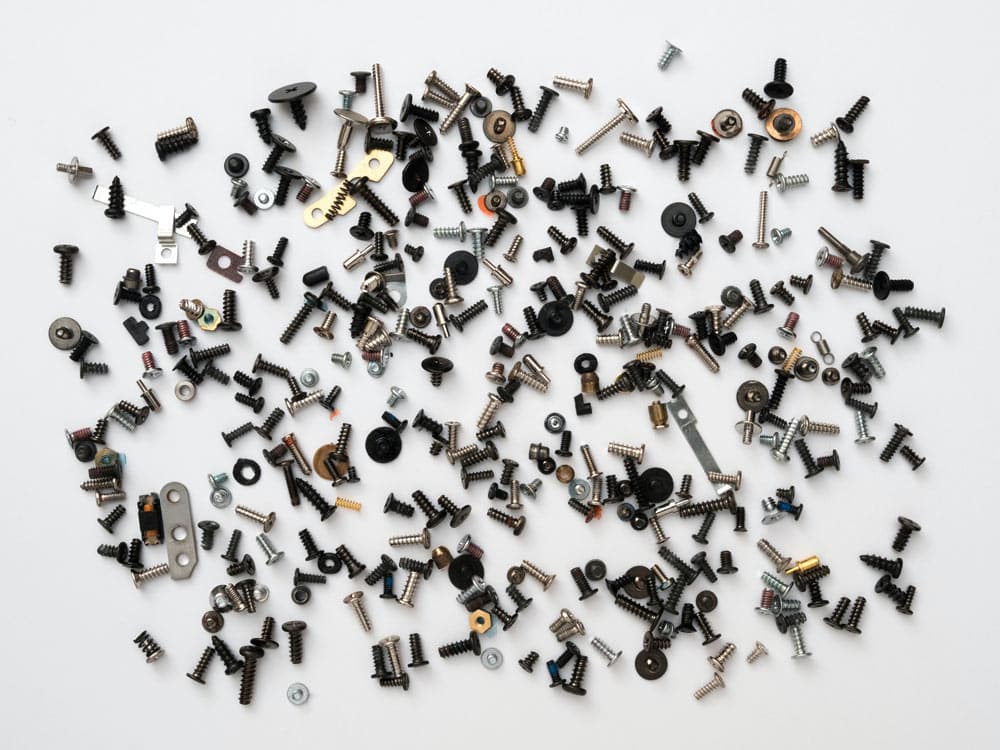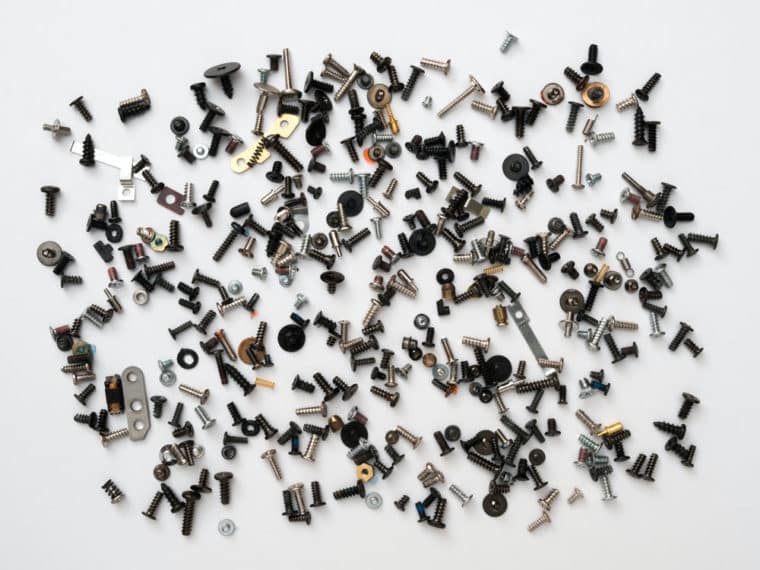Fasteners are pieces of hardware used to mechanically affix two or more objects together — and there are a lot of them. From screws to clips to rivets and beyond, the list of fastener types is astoundingly long. Further yet, each type of fastener also has a multitude of subtypes that each lend themselves toward unique applications.
The bottom line is, if we were to write about all the types of fasteners available, our fingers may just fall off. So in this article, we’ll be focusing on just three of the more commonly used fasteners: bolts, screws, and studs.
3 Common Types of Fasteners
Bolts, studs, and screws are just a few of the many types of fasteners out there. They can also be some of the trickiest to distinguish from each other. In terms of both appearance and function, their differences are often pretty unclear and ambiguous, especially when you mix in each type of fasteners’ various subtypes. Below, we’ll provide you with some general guidelines to understand what each type of fastener is, what it’s used for, and how it’s different from the rest.
1. Bolts
Bolts are externally threaded fasteners designed for insertion through the holes in assembled parts. They’re incredibly versatile fasteners, and they’re known for their holding strength and durability. They also allow for easier assembly and disassembly when needed.
Normally, bolts are intended to be tightened or released by torquing a nut, not a head. However, some subtypes do have heads on them and are used for different purposes. Amongst many others, some common bolt subtypes include:
- Carriage bolt – A type of bolt with a threaded bar and a domed, enlarged head on one end that is designed to keep the bolt from pulling through. It’s generally recommended for applications that involve attaching wood to metal.
- Hex bolt – A type of bolt that has a six-sided hex cap on one end. It’s intended to work with a nut and is commonly used in construction and heavy machinery applications.
- Flange bolt – Also called a hex flange, it’s a type of bolt that has a washer on the underside of a hex head, which helps distribute the force from a bearing load more efficiently. It’s commonly used in the automotive industry, especially in framing applications.
- Machine bolt – A type of bolt that has a threaded bar with a square head on one end and a semi-cone point on the other. It’s used for general hardware and fastening metal to metal.
- Specialty bolt – A type of bolt that is specifically designed and manufactured for a particular use. Due to their specificity, specialty bolts tend to be manufactured in smaller quantities, and can therefore be harder to find than standard parts.
2. Screws
Screws are externally threaded fasteners capable of being inserted into holes in assembled parts, mating with a preformed internal thread, or forming their own thread. In most cases, they’re self-tapping, meaning the threads of the screw mate with the material it’s turned through to hold the screw in place.
Screws usually have threads that aren’t compatible with nuts, so they’re tightened and released by torquing a head. Screw subtypes are generally defined by the material they’re used for, but there are a few outliers. Here are some of the most common ones:
- Hex head cap screw – A type of screw with a hexagon-shaped head that’s designed to be inserted into a pre-tapped hole. It’s commonly used in automotive and heavy machinery applications.
- Wood screw – A type of screw that has coarse threads, a smooth shank, and a tapered head, making it perfect for wood construction applications.
- Masonry screw – A type of screw that either has a flat head for countersinking or a hex washer head to sit on the surface of the material. It’s primarily used to fasten materials to concrete, mortar joints, and brick.
- Sheet metal screw – A type of screw that has sharp points and a flat or hex washer head. It’s primarily used for metal applications and can secure multiple materials at a time.
- Machine screw – A type of screw that has a rust-resistant coating and fine threads, making it a durable option for heavy-duty applications like joining machine parts.
*The difference between a bolt and a screw can be especially difficult to determine, so if you’re still confused after those descriptions, you’re not alone. Luckily, some organizations, including the US Customs and Border Protection (CBP), have established criteria to help identify key elements of each. Although this is just one agency’s opinion, we like it because it’s clear and concise. You can learn more about it in this past article of ours.
3. Studs
Studs are externally threaded fasteners that typically look like and operate as threaded bars. Most studs are threaded at both ends, allowing both ends to be paired with nuts. However, some studs do have a head at one end, allowing it to be permanently attached to a tapped component through welding, swaging, or bonding.
Studs generally work great for joining two components with internally threaded holes together. However, depending on which stud subtype you’re working with, their function can change. Although there are quite a few stud subtypes, some common ones include:
- Hex stud – A double end stud with threads on both ends and a hex in the middle. It’s often used in wheel hub assemblies.
- Fully threaded stud – A type of stud that is essentially just a piece of threaded bar with no chamfered ends. It can be used for fastening large parts of structures and machinery together with nuts at each end to form a bolt.
- Flange stud – A type of stud that is almost identical to a fully threaded stud bolt, except that it has chamfered ends.
- Tap end stud – A type of stud that has a short length of thread at one end, which is designed to be screwed into a tapped hole. The other end has a shank and longer length of thread at the other end, which is paired with a nut.
- Double end stud – A type of stud with a shank in the middle and threads at each end — both of which are paired with nuts. The threads can be different lengths, and even different diameters, on each end.
- Welding stud – A type of stud that has a full-length machine thread and a thin, wide head that makes them easy to weld permanently to a component.
RELATED: Need a specialty bolt, screw, or stud? Wilson-Garner can help.


